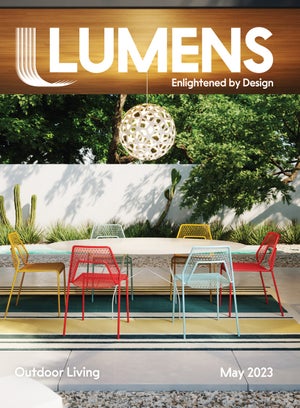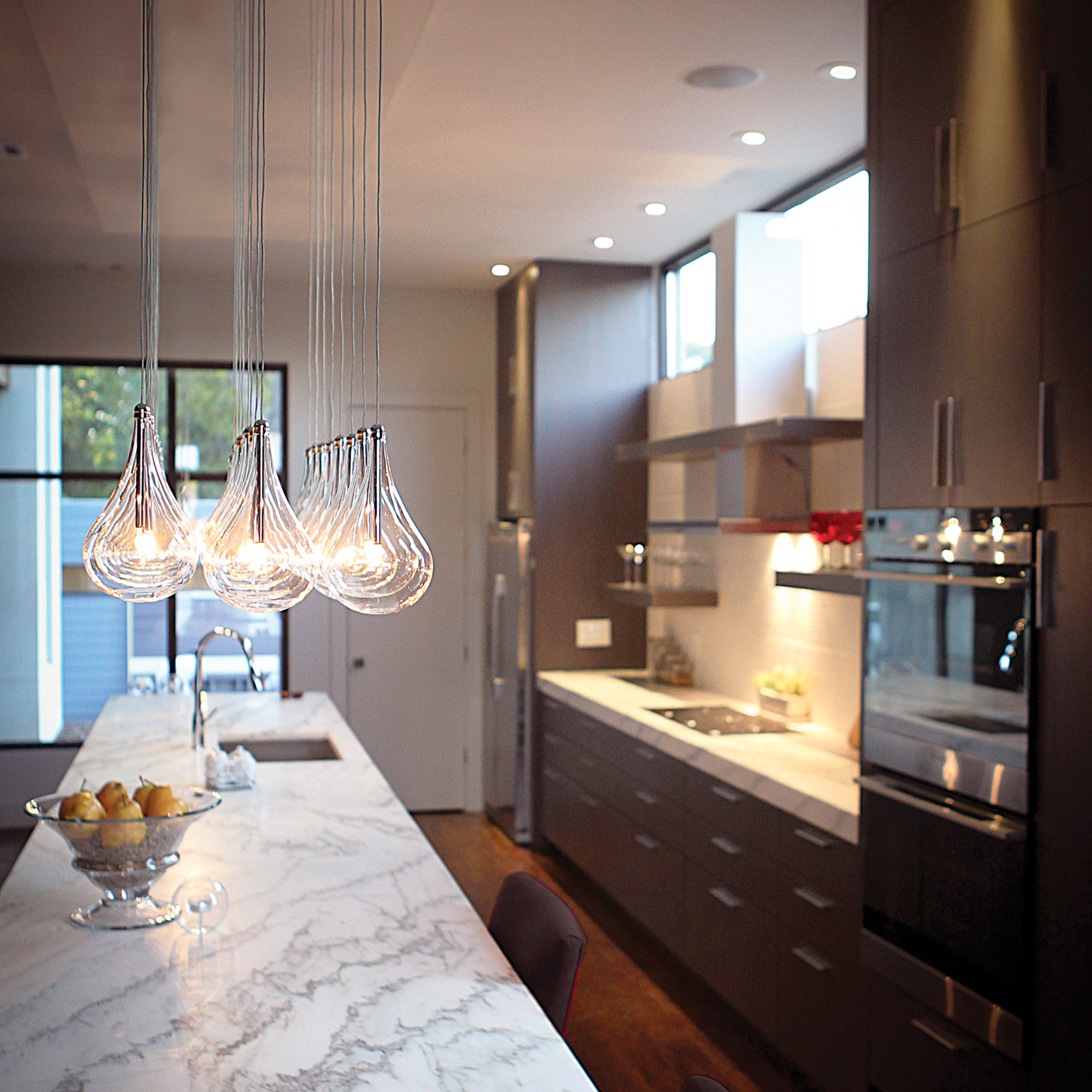
In the home and commercial spaces, proper light layering–ambient, task and accent lighting–helps bring a room to life with design flexibility and functionality.
Using multiple light sources allows for a smooth transition from a bright room used to work in the daytime to a sophisticated space for entertaining in the evening, or a dim room for watching films. Altogether, ambient, task and accent lighting create a visually and functionally balanced room.
Ambient Lighting
This type of lighting should provide glare-free, general illumination in a space. Depending on the time of the day or the amount of light coming inside, you can build upon natural sunlight with soft ceiling, floor and wall lighting.
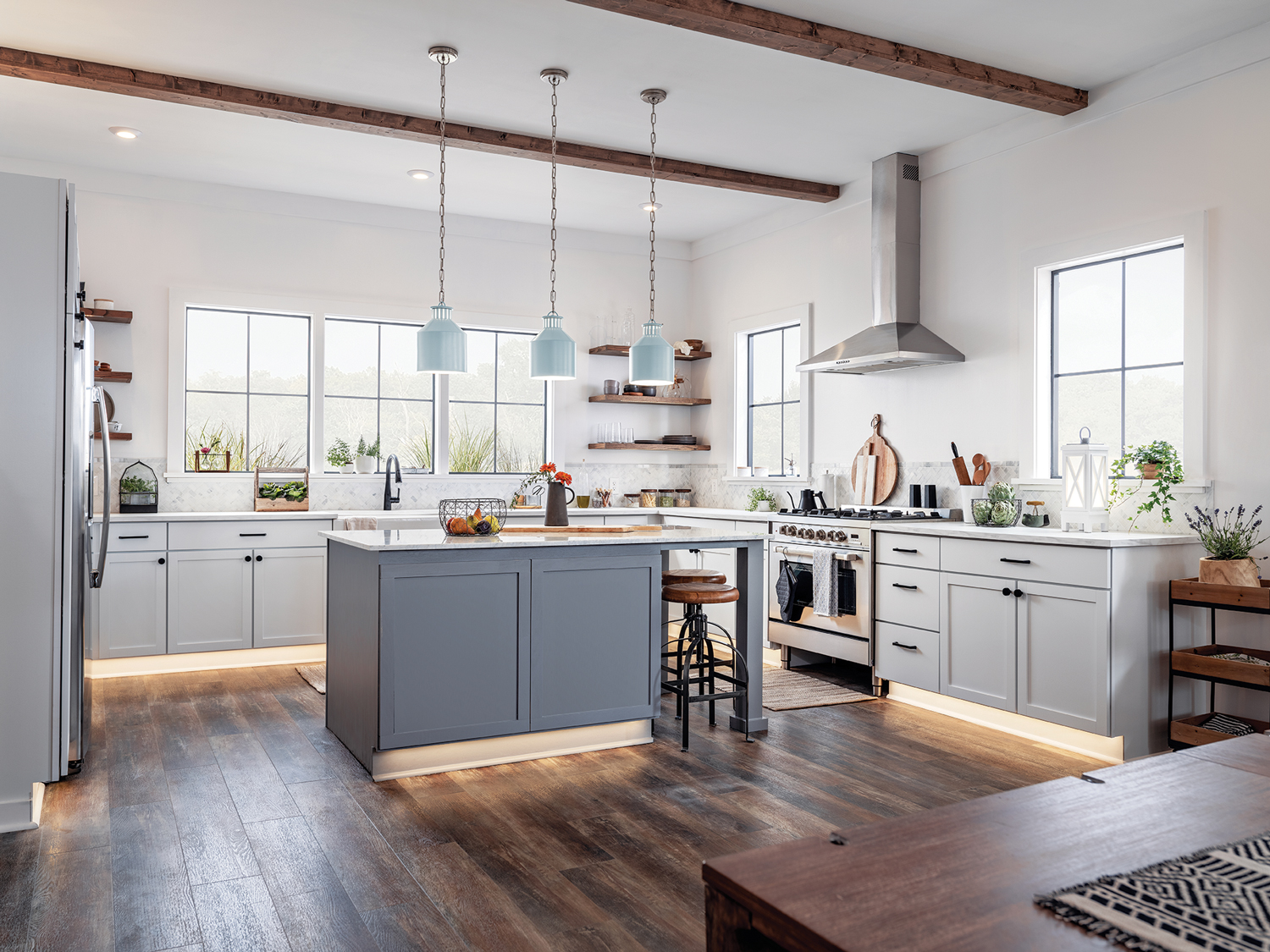
Before we get into how to determine how much light you’ll need, we must first clarify how to measure a bulb’s light output. The best way to categorize the brightness of a lightbulb is by its lumens. Lumens are the measure of the total amount of visible light from a lamp or light source. As a general rule of thumb, it takes 20 lumens per square foot to create adequate ambient lighting.
Let’s put that into perspective. The average living room is 250 square feet. Using our formula, a 250-square-foot room would require about 5,000 lumens (spread out and from a variety of sources, of course). A variety of circumstances such as failing vision or architectural obstructions may mean your space requires more lumens to be adequately lit. Additionally, when you choose recessed lighting for ambient illumination, approximately one light for every 4 square feet of ceiling is a good starting point.
As a guide to curating the perfect ambient light, here are the most common lighting tools for the job:
- Daylight: Natural lighting from windows, skylights, atriums and lighting tubes to provide effective internal lighting during the day.
- Flushmount: Designed to hug the ceiling, flushmount and semi-flushmount ceiling lights are particularly great for illuminating spaces with low ceilings.
- Chandelier: Evolved from the classic candelabra, chandeliers have a branched frame equipped with multiple lamps to light up the surrounding space.
- Pendant: Single-shade fixtures that hang from the ceiling or a track lighting system, usually suspended by a single cord, chain or metal rod. Because their bulb count is typically less than chandeliers, pendant lights are often used in multiples if more light is needed. The classic way to arrange pendant lights is in a straight line or cluster over a dining table or kitchen island.
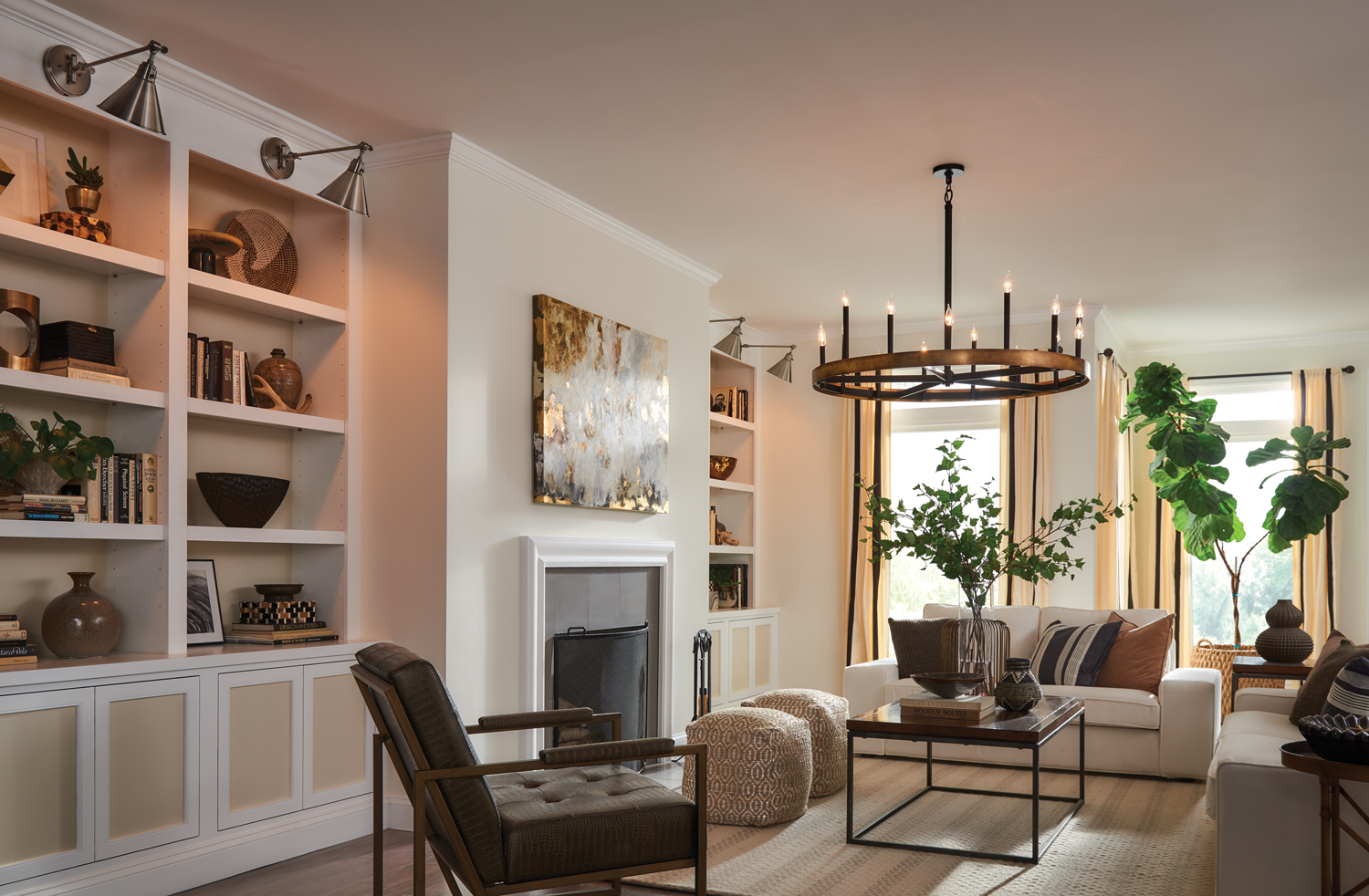
- Wall Sconce: A lighting fixture affixed to a wall for support and, usually, electrical needs. An upward-facing wall sconce directs light towards the ceiling, resulting in subtle ambient light.
- Torchiere: Not to be confused with a floor lamp that is used more or less to provide lighting for a task, a torchiere is taller and features an upward-facing shade. The light reflects off the ceiling to illuminate a great part of the surrounding space.
- Cove: Found in ledges, recesses, ceiling valences and high on walls, cove lighting usually involves slim and/or flexible architectural lighting fixtures (like LED tape lights) that aren’t easily visible, but direct light up toward the ceiling.
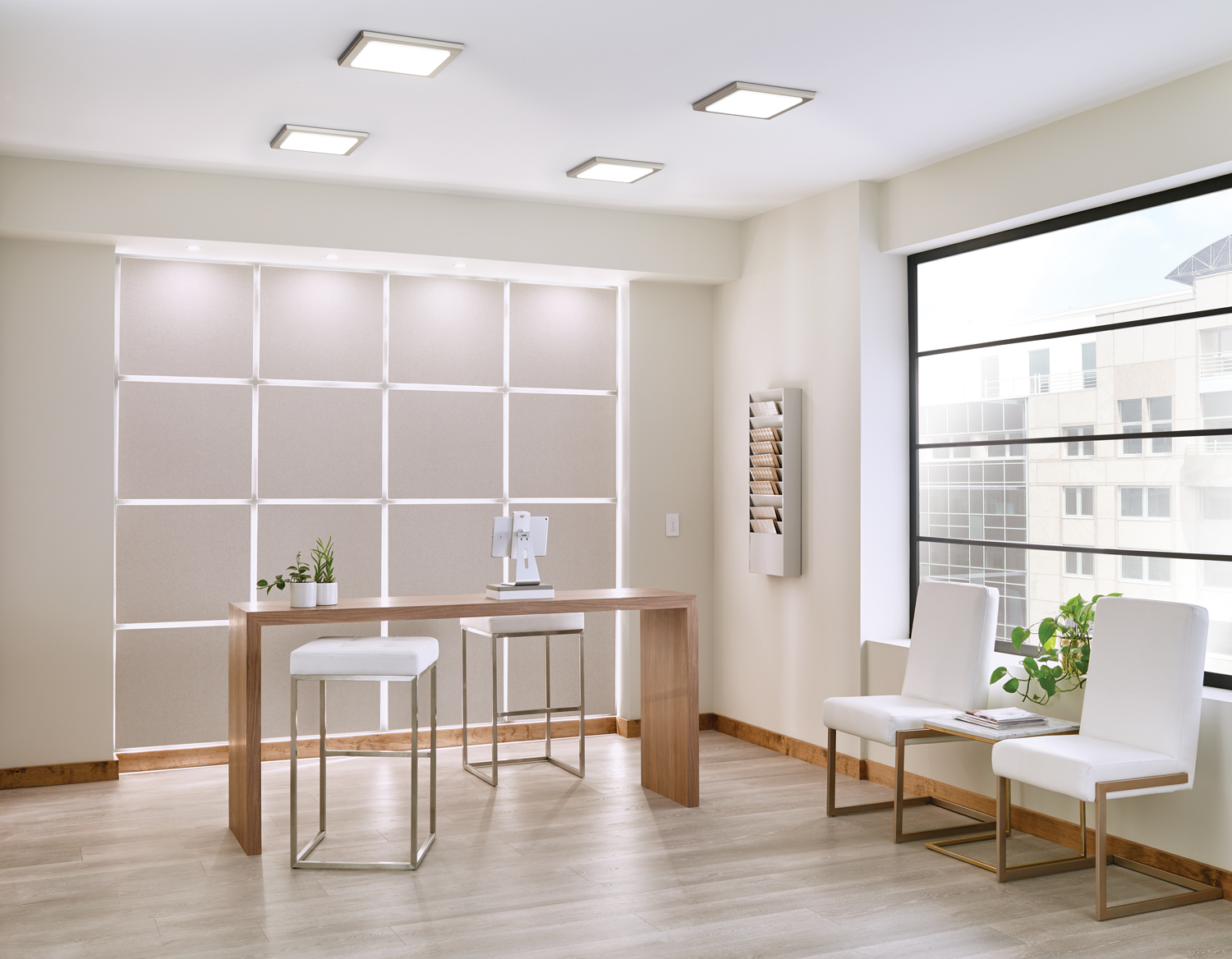
Once ambient lighting is established, other lighting tools can be used to further illuminate the space, get rid of shadows and provide localized illumination to work under.
Task Lighting
In the midst of at-home activities, specialized task lights not only allow you to see what you’re doing, but provide the proper level of focused, bright illumination required to perform a specific activity without strain.
- Focus on brightness. Task lighting is not intended to illuminate an entire room, but it still requires more lumens than ambient lighting to focus light on your workspace. Measure the square footage of your task area and multiply it by 50 to find your minimum lumen level for adequate task lighting.
- Adjustability is key. Choose fixtures with built-in dimming capability (or hook it up to a dimmer switch) and look for movable arms, shades and portability to customize your work areas to your liking.
- Get the Kelvins right. For detailed projects and comfort when reading, color temperature can be an important factor. The cool, bright daylight tones of 4000 Kelvin are great for sewing and painting model airplanes, but your eyes will love you more with a warm 2700 to 3000K reading lamp that mimics the output of traditional incandescent bulbs.
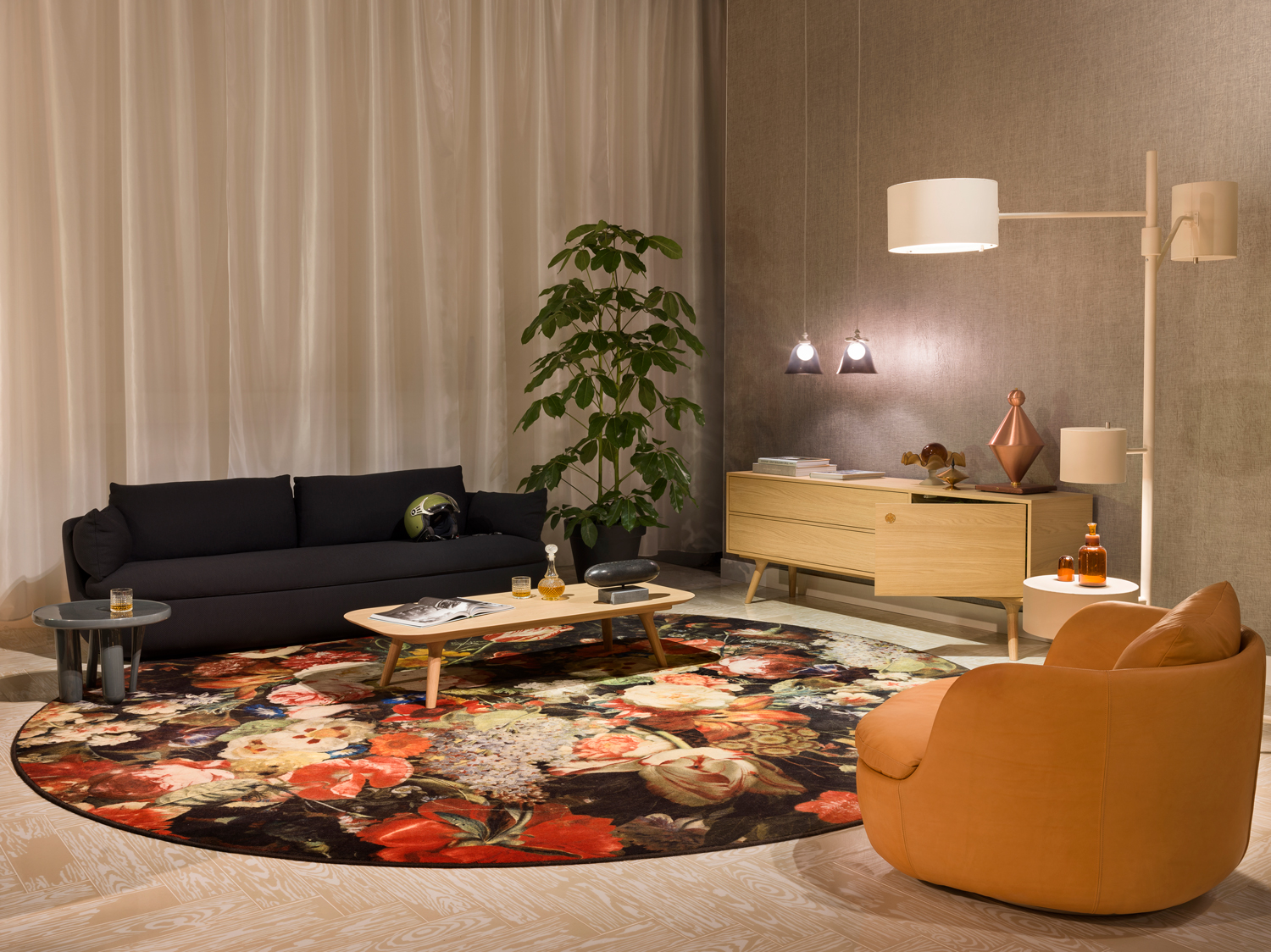
Task lighting options include
- Pendants: Downward-facing pendant lights can function as task lights for reading or working on hobbies.
- Desk/Table/Floor Lamps: These portable lamps come in a range of models to suit your work environment. Whether you need light for reading or writing, a desk lamp or floor lamp can help you work more efficiently and comfortably. They are often adjustable (brightness and direction), to provide just the right amount of light.
- Undercabinet: A perfect solution for kitchen counters and corners that don’t get enough light. Undercabinet lighting brightens food prep areas and gets rid of the shadows cast by overhead lighting and cabinetry.
Together, task and ambient lighting create a well-lit space filled with general and functional lighting elements.
Accent Lighting
Wall decor, photos and unique architectural details receive more attention when a light is present to highlight their characteristics, depth and dimension. As a general rule, accent lighting should be three times brighter than the surrounding ambient lighting for maximum impact.
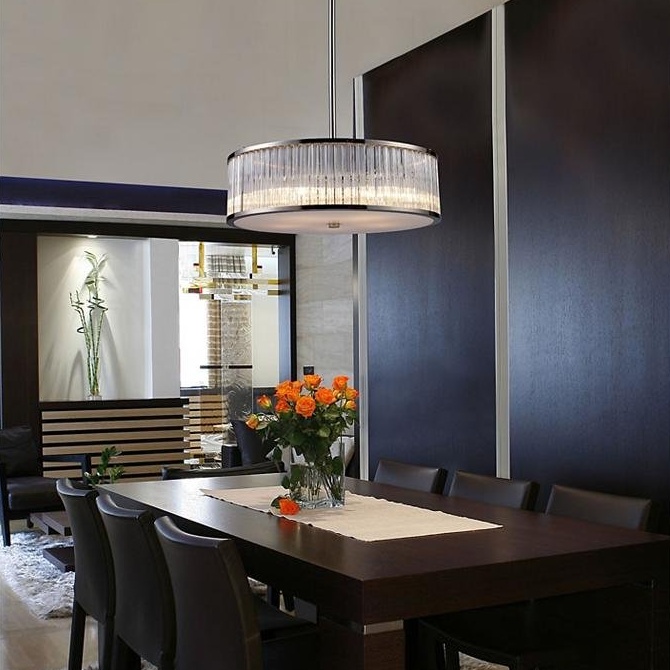
Common accent lights include:
- Wall sconces: Made in all shapes, sizes and styles, wall sconces are perfect for creating focal points on the wall. Placed on opposite sides of an object, a wall sconce draws your eye to the decorative accessory. If you take décor out of the picture, a wall sconce that features an up and downlight produces a captivating hourglass silhouette on the wall and dramatic shadows that would be appreciated in a hallway or entryway.
- Picture lights: Bring direct attention to your fine art with picture lights. These lights highlight the rich details and vivid colors of the artwork. Picture lighting is simple to install and it will really make your artwork standout, and often comes in plug-in models that do not require electrical work.
- Recessed: Unobtrusive recessed lighting can be installed and in many instances adjusted to focus on an object or wash down a nearby wall.
- Track or Monorail: Multiple adjustable track heads and spotlights along a suspended track or rail system can provide accent lighting in a multitude of directions.
It is important to note that, depending on their brightness and beam spread, both accent and task lighting fixtures can realistically produce adequate ambient light at the same time.
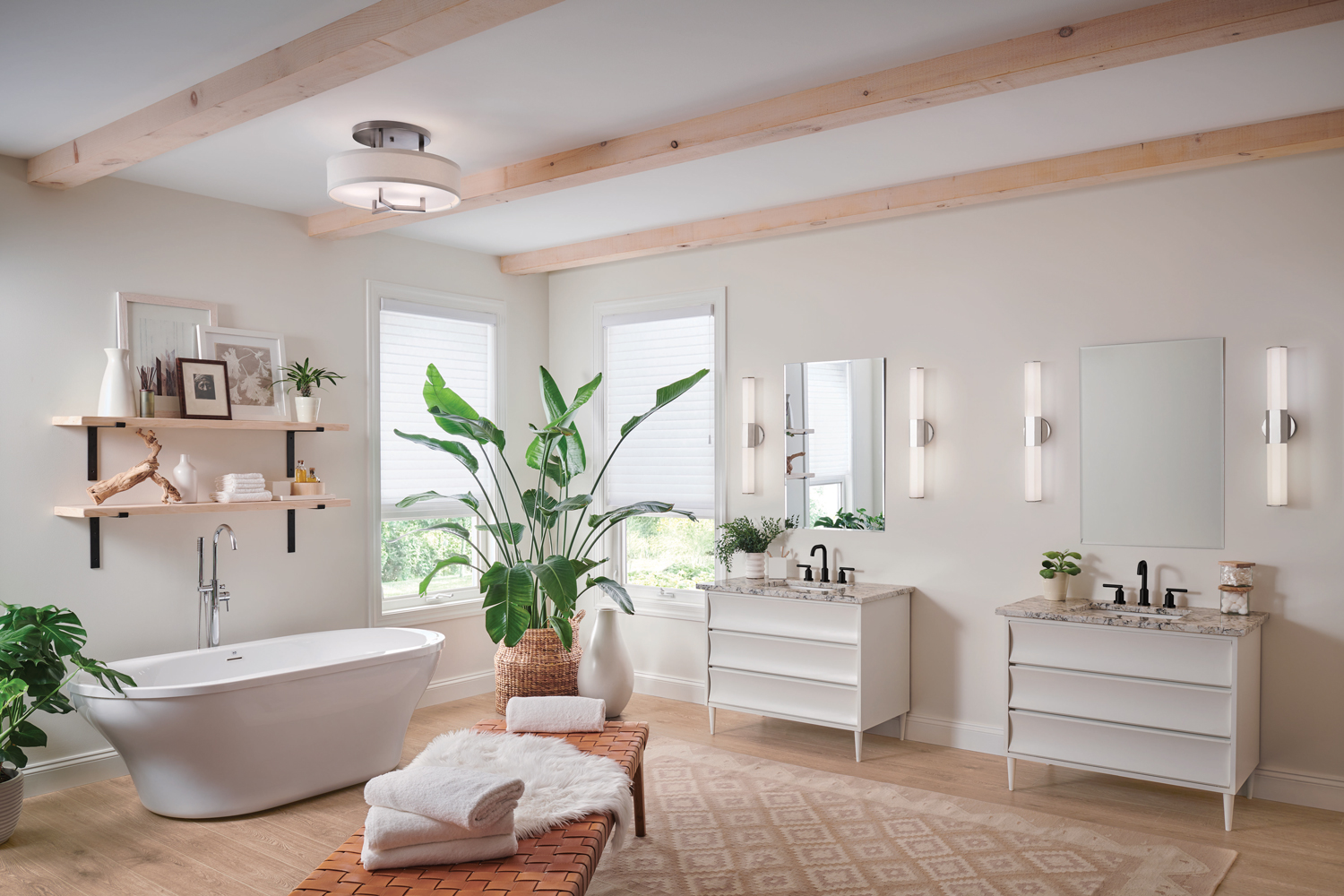
Pulling it All Together (and Controlling It)
What we’ve gone over are the basics of light layering, but there are at least two more elements to light layering to take into consideration: the proper light bulbs and lighting controls.
Your choice of light bulbs can drastically affect the outcome of your light layering. Start off on the right foot by selecting bulbs with your preference of cool (4000K or higher) or warm (2700-3000K) color temperatures.
And once you’ve obtained the right light layering layout, the next step is to have total control of that lighting’s settings. Adjusting the mood in the room is a breeze when you have the right light controls. This means a central control device for turning fixtures on and off and, especially, dimming. Many systems allow you to preset “moods” at the push of a button, with Wi-Fi and smart options to tie together many functions.










